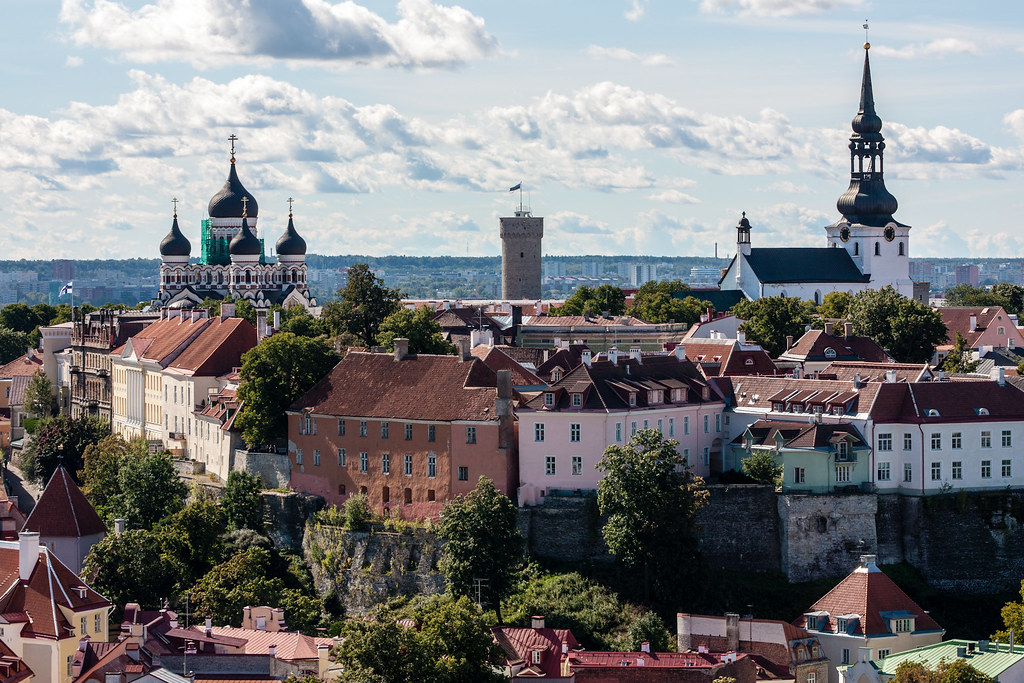
The appearance of China on the world stage has heated up emotions in national and transnational power corridors as well as created headlines in media and vigorous debates in public space. Recently, even in Estonia the new candidate for world leadership has become a much-discussed topic.
The China Challenge
Recently, many countries and institutions have reached a common understanding that specific strategic approaches need to be developed in order to keep the interaction with a rapidly developing and globally challenging China well-targeted. The European Union (EU) launched its China strategy already in 2016, which was created in addition to the ‘EU-China 2020 Strategic Agenda for Cooperation’ from 2013. As stated in the more recent Joint Communication ‘EU-China – A strategic outlook’, the strategy aims to make EU policy “more realistic, assertive, and multi-faceted”, which seeks to ensure that relations with China are set on “a fair, balanced and mutually beneficial course”. For Estonia, this sounds good and is, of course, in line with the interests of our small country. The Joint Communication further emphasizes that “neither the EU nor any of its Member States can effectively achieve their aims vis-a-vis China without full unity”, thus when cooperating with China, “all Member States, individually and within sub-regional cooperation frameworks, such as the 17+1 format, have a responsibility to ensure consistency with EU law, rules and policies.” For Estonia, as a loyal EU member state, this is again completely understandable and acceptable.
Then what is the problem? Firstly, there has been some questioning of Estonia’s participation in China’s ‘16+1’ cooperation format with Central and Eastern Europe (after the recent joining of Greece now known as ‘17+1’). Therefore, it is worth to retrace under what circumstances the decision to participate in the cooperation was made and how Estonia-China relations have evolved since then. Second, there have been some differences in perception among the European countries about how the European “unity” is constituted and whose interests prevail in case of “mutually beneficial” relations with China. This discussion should not to be ignored and will be addressed in a brief overview, including some conclusions.
China is not particularly well-known in the world as an implementer of inclusive decision-making processes and this for a good reason: as an autocratic state, China does not require this kind of methods, but uses them only as it sees fit. This was also the case of the 16+1 format created in 2012 without any preparatory work together with the targeted countries or the EU. China failed to take into account or underestimated the sense of identity of various countries when compiling the group as well as the rules and regulations present in the EU member states. It was therefore not surprising that the invitation to join the format was often received with reluctance and the implementation of some original ideas encountered problems. Moreover, not knowing the target audience meant that many of the proposals (such as bilateral agreements and loans from China with state guarantees) were immediately turned down or came to halt after clarification of conditions (especially in the EU member states; the Balkans present a separate case). Nevertheless, China did learn and adapt its approach accordingly.
Estonia’s Cooperation with China
For Estonia, the establishment of 16+1 format created quite a dilemma. One needs only to imagine how much effort Estonia has put into nurturing its Nordic image and overcoming the Soviet past, and suddenly it gets invited to become again part of Eastern Europe along with other ex-communist countries. It was, of course, impossible for the ‘small Estonia’ to explain this to the ‘big China’ and make Beijing change the format. It was also clear that if Estonia wanted to develop relations with China, the choice was simple – to join. Especially after the financial and economic crisis of 2008, China had become one of the most important powers and partners both in the world economy as well as for the EU, so naturally Estonia was interested in advancing its relations with China. In addition, due to Dalai Lama’s visit to Estonia in 2011, China had pretty much frozen the bilateral relations and Estonia was only able to watch from the sidelines as its neighbors and partners from the EU were successfully doing business with China while Estonian companies suffered – even more so due to the EU’s sanctions against Russia. Thus, the decision to join the 17+1 format can also be seen as a move to avoid further isolation. To this end, it was necessary to restore functional Estonia-China relations and, like other countries, participate in the cooperation development with this rising economic power.
As previously mentioned, the ideas for the implementation of the format were initially rather unrealistic and the parties have needed time to understand the concrete offers, requirements and opportunities, the rules of the game as well as the purpose of this collaborative format. In order to demonstrate its commitment, China proposed annual bilateral meetings at the prime minister’s level for all participants. Immediately, everyone saw here a good opportunity to promote themselves and their country as the best place for Chinese investments and cooperation with Chinese companies entering the European market, developing tourism, etc. China, for its part, offered funding and assistance for large infrastructure projects and opening up its market for export products.
For several years, the same ‘beauty contest’ for China’s favor has been going on among the participants and many promising press releases have been made about ‘successful’ projects, but it has finally become clear that this cooperation will not be so easy. Furthermore, by 2016, the EU, with Germany in forefront, had become increasingly sceptic about China’s activities in Europe (takeovers of technology companies, 16+1 format) and sounded alarm. In order to manage these fears, China asked Germany and others to join the 16+1 summits as observers. However, by the time of the 2018 summit, a certain distancing from the 16+1 format by Beijing could be observed. Surprisingly, the format received new vitality from a different source than China – from Greece, whose joining upgraded the format to ‘17+1’.
So, how have the Estonia-China relations developed during that time and where are we today? One can say that, for the time being, Estonia is enjoying the best cooperation period with China in history. The prime ministers’ meetings within the 17+1 format have proven useful for closing such large-scale deals as the Estonian energy company’s 2.1 billion dollar venture in Jordan. Thanks to the good relationship, Estonia has managed relatively fast to complete the relevant processes and sign protocols that enable the export of various fish, meat and dairy products to China. In recent years, cultural cooperation has been so intense that it is hard to keep track of all groups touring in China. In education, several China-related programs have been successfully implemented and the cooperation has intensified. Thanks to the cooperation agreements signed at the high-level summits (though not in the framework of the 17+1, but the New Silk Road initiative), Estonian companies have been granted regular meetings at the top level with Chinese giants like Alibaba. Although development of cooperation with new partners can take several years, Estonia has shown itself as a stable, constructive partner through consistency in interaction with China. The result is increased trust from the Chinese side and willingness to be more inclusive and to work closely together both in China as well as in Estonia.
The Many Faces of “European Unity”
Having good relations with China does not automatically imply a problem with the EU – as long as the cooperation is consistent with “EU law, rules and policies”. China has become one of the largest trading partners of the EU and this is not because of the new EU member states, but because the large economies (Germany, France, UK) have been successfully doing business with Beijing for decades. Germany, “der Exportmeister” (export champion), has been particularly successful in working with international value chains. According to the trade balance, Berlin has benefited the most in the EU from business with China and has also for years been actively building China-Europe transportation links. Looking at the EU’s internal statistics, it becomes clear why some CEE countries, including Poland and Hungary, are called the “hinterlands of Germany“, which certainly poses a challenge to these countries. However, this might also explain why they are so strongly opposing EU’s intervention into their collaboration with China, including the 17+1 format. In addition, the recent opposition by France to start talks with North Macedonia and Albania on joining the EU has raised questions as this might leave them even more affected by China (and Russia) – a situation that allegedly France also wishes to avoid.
However, these CEE countries are not the only ones who see the situation as unfair – the new Italian government recently decided to join Belt and Road Initiative (BRI) and this was despite the opposition from Germany and France with attempts to exert pressure through diplomatic channels. German Economy Minister then announced that the ‘big EU states’ (Germany, France, UK, Spain) agreed not to sign such agreements bilaterally, but as a group between the EU and China. Whether this decision-making process involves the ‘small EU states’ he did not mention. However, what does such a statement imply? Which countries constitute the “full unity” that counts on the EU level, whose interests prevail when taking “mutually beneficial” decisions and what kind of message does this send to the other EU countries who are also part of the 17+1 format?
From the Estonian point of view, there is no need to get too excited by the discussions emerging on the China topic. Estonia has always been and will be a dedicated EU member and complies with “EU law, rules and policies”. The awareness of our decision-makers about the EU laws and regulations is high enough to ensure correctness of procurement procedures etc. – even if a Chinese company happens to be one of the competitors. Of course, there is always a threat to the public interest due to human weakness, e.g. inclination towards corruption, but even in this respect the security risk in Estonia is quite low. We are more threatened by our own ignorance about China and lack of knowledge about the background of some business partners arriving here, who usually follow no national agenda, but come as private entrepreneurs and luck-seeking intermediaries. Both politicians and senior officials as well as businesspeople themselves are advised to study the background of such persons before granting any meetings or signing ceremonies with photo sessions. In addition, monitoring systems such as EU’s foreign investment screening mechanism, launched under the leadership of the German, French and (former) Italian government with the aim of protecting the EU’s strategic interests, help to strengthen risk mitigation and should be used also on a national level.
In the interest of EU’s unity, however, efforts should be done to increase mutual understanding and to consider the legitimate development needs of all member states. For Brussels, it is not beneficial when Germany uses diplomatic channels to try to hinder both CEE and G7 partners from striving for collaboration with China. On the contrary, Germany’s own success in business with China and continued activities in the field of Industry 4.0, standards and other areas of cooperation may leave the impression of hypocrisy. Thus, if the aim of Brussels is to cooperate with China in “full unity” and on a “mutually beneficial” basis for all, it should also respect the various interests of the members. A threat to EU’s unity is not the 17+1 format, but excessive arrogance, not to mention other issues such as Brexit.
This article is an edited version of the Estonian-language article published in “Postimees“ on November 2, 2019.
Written by
Liisi Karindi
KarindiLiisiLiisi Karindi (MA) is a business developer and government advisor who has been working with China and other Asian countries for almost 20 years.


